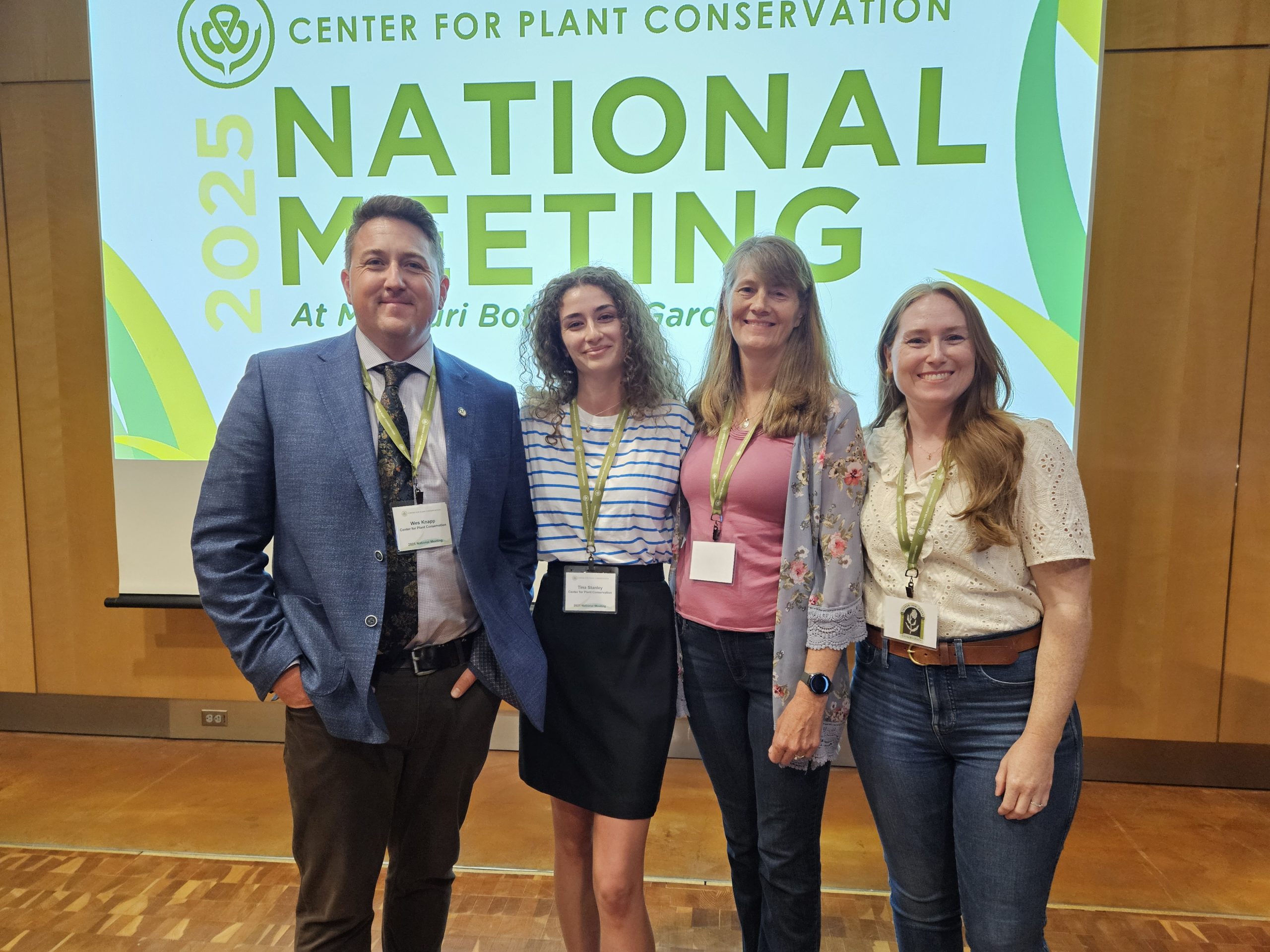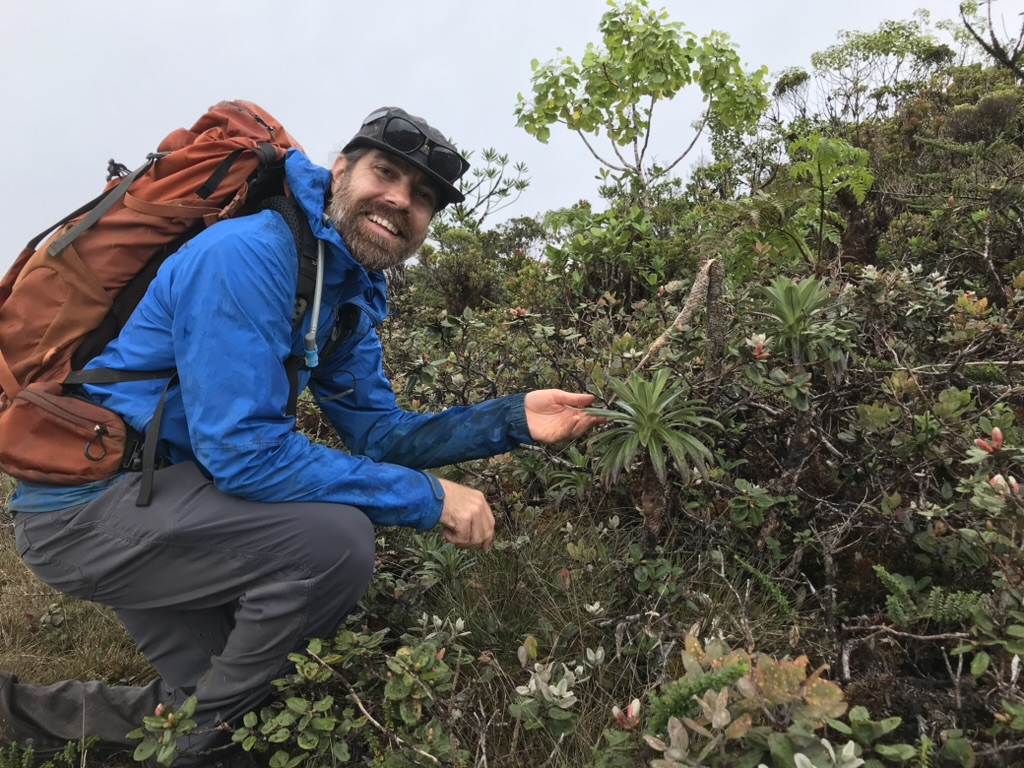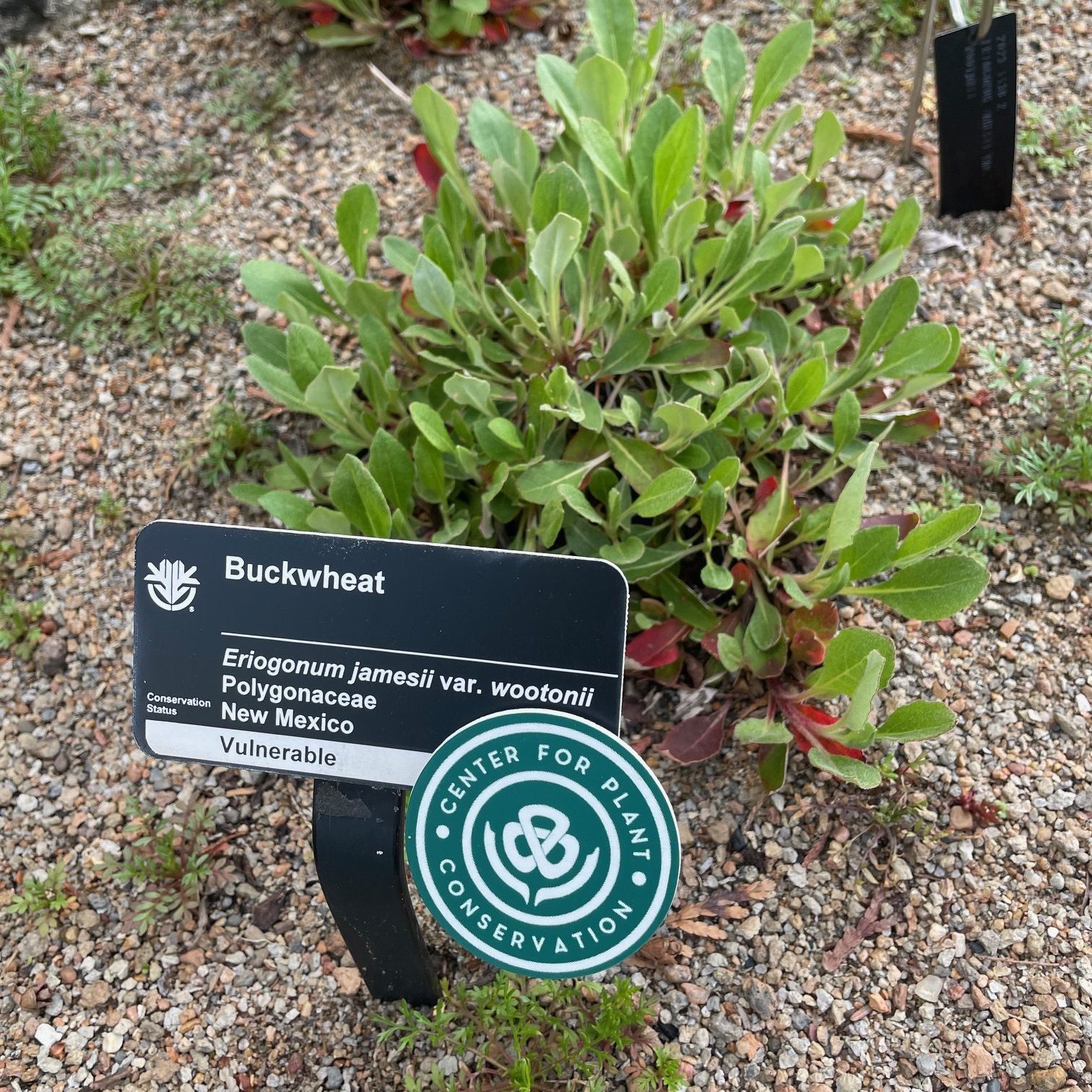Save Plants
CENTER FOR PLANT CONSERVATION
April 2019 Newsletter
Habitat. Wildlands. Native ecosystems. Natural lands. Regardless of what we call them, these tracts of land dominated by native plants, animals, fungi, and all manner of microorganisms form the living fabric of our planet. Natural lands are home to species doing what they are meant to do – interacting, competing, and depending on one another for survival. At their pristine best, these species work together ecologically to keep Earth green and healthy. But as we know all too well, natural lands are under major threats the world over.
From deforestation to desertification to development to unfettered climate change – natural lands are increasingly at risk of destruction and loss. Center for Plant Conservation Participating Institutions are often the first line of defense in protecting these vital habitats where many imperiled species hang on to their very existence.
Natural lands management is a challenging field of conservation requiring an understanding of not only conservation science but also fundamental management that looks as much like construction, agriculture or ranching efforts as they do conservation. As such, the natural land manager is a jack of all trades in our business, capable of wearing many hats to ensure that the land and the species that depend on it are healthy and protected.
Read on to learn about a few of these efforts and what it means to manage and protect our natural lands. We are thankful for their toil and impressed with their resolve to save species and the land on which we all depend.
The Hard Work of Stewarding Natural Lands
The amazing features of Longwood Gardens are found throughout a large expanse of natural lands. Maintaining these beautiful gardens is clearly the result of hard work and skill. But caring for those natural lands takes a lot of work as well – especially since there are over 600 acres of natural lands to steward. Learn more about what it takes to support the perimeter and natural lands at this beautiful garden.
The many beautiful gardens, fountains, historical buildings, and conservatories of Longwood Gardens make up less than half of the garden’s 1,100-acre grounds. Surrounding and stretching beyond these elements are some 600 acres of beautiful Pennsylvania habitats. These forests, meadows, and wetlands, along with a bit of agricultural land, are maintained by Longwood as part of the garden’s commitment to sustainability – preserving the natural resources that support the garden long-term. Here the largest meadow in the region produces lovely blooms, bluebirds can find homes, and salamanders flourish.
Though these lands allow nature to be on display, that doesn’t mean the lands are left to their own devices. It takes a lot of hard work from garden staff to maintain and steward this natural landscape. This human intervention is needed as the natural processes have been impacted by various changes to the landscape over the centuries. Climate change, the introduction of invasive weeds, and changes to fire cycles, and more impact these habitats. Fortunately, Longwood Gardens’ Land Stewardship Team is up to the task.
From helping citizen scientists monitor bluebirds to conducting prescribed fires in the meadowlands, the Land Stewardship Team conducts a range of activities that support these important perimeter and natural lands. There are some seven to ten members of the team to take all the work on, plus the amazing volunteers. And yet it is still hard to keep up with everything that could be done to maintain, and learn about, these lands and the plants and animals they support.
Between all the monitoring (monitoring of birds, turtles, herpetofauna, and vegetation as part of several projects!), restoration, weed removal, and more, prioritizing the work can be a challenge. Longwood takes a participatory approach to prioritization – getting feedback and buy-in from the team about the activities to undertake and where restoration efforts should be focused. They also reference the “Soil to Sky Management Plan,” a strategic plan which lines outlines the high-level goals for the lands, making sure their activities fit in with the bigger picture.
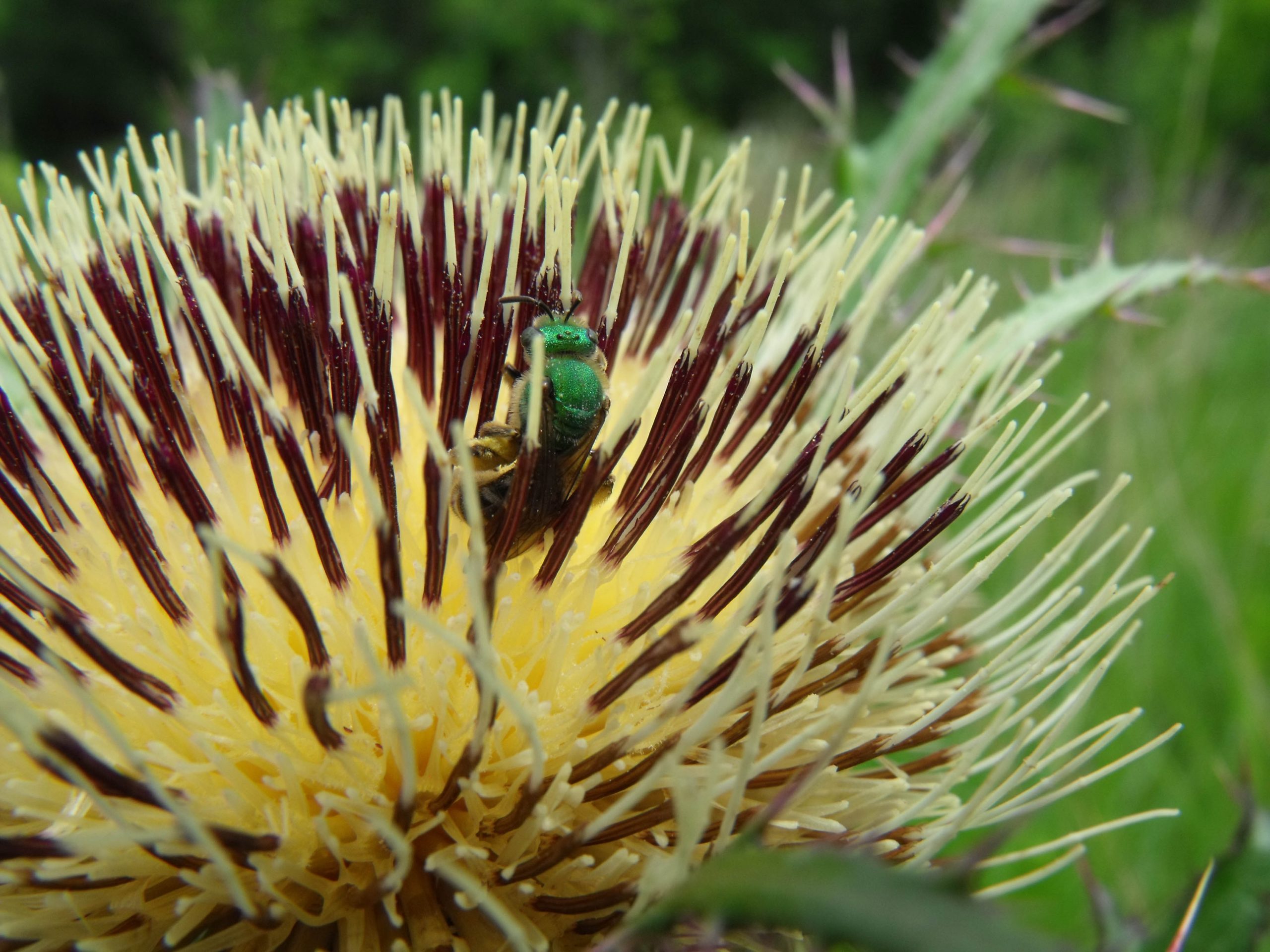
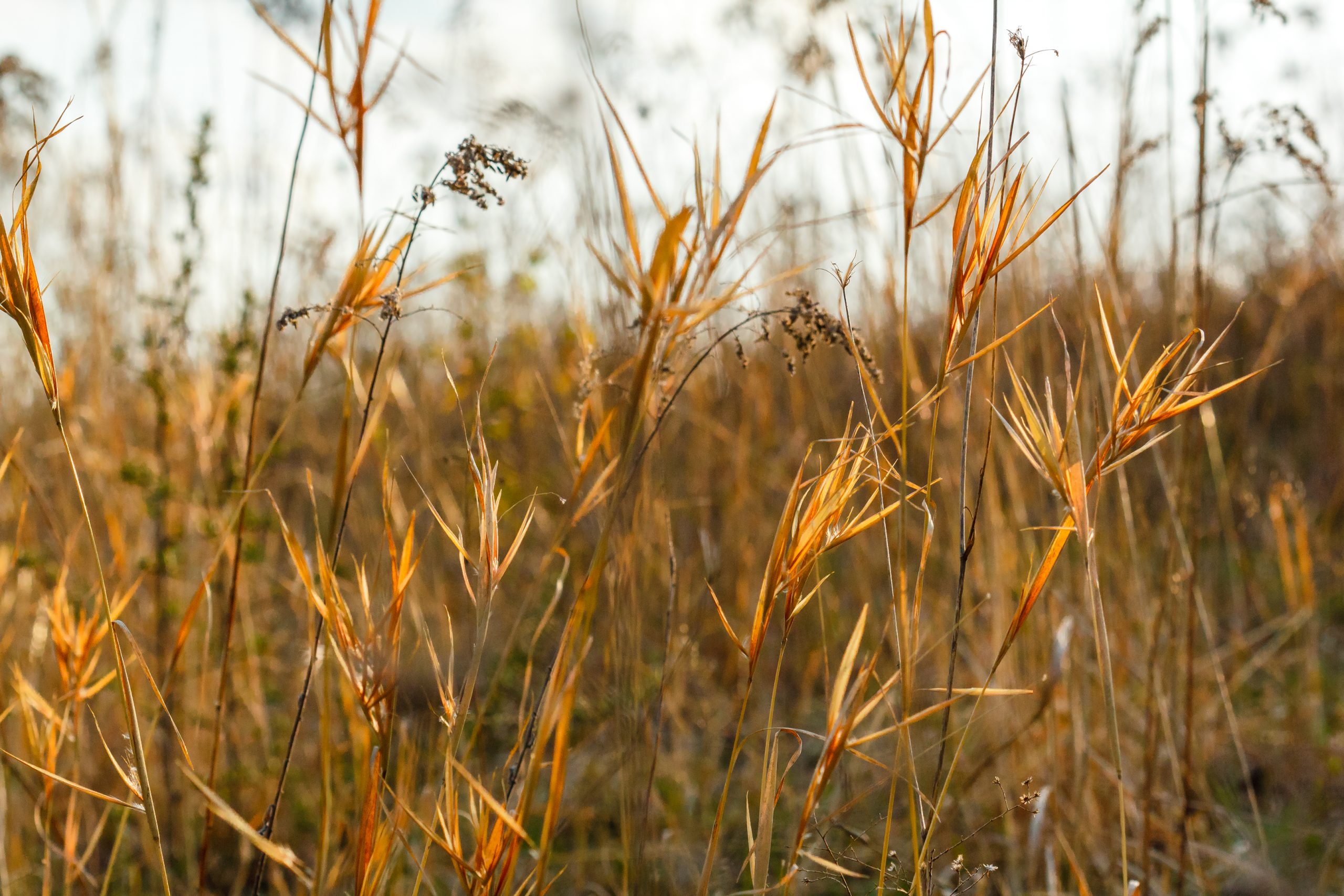
Conducting prescribed fires is definitely one of the activities that fits into the larger strategic plan. Fire is really a tool to help the stewardship team suppress weeds and promote native plants – including rarer species like Elliot’s bluestem (Andropogon gyrans). Burns occur each year and are quite the production. The team works with a local burn boss to make sure their goals can be achieved safely. They have to consider weather conditions, coordinate with various partners, abide by all the strict Pennsylvania controlled burn laws, and communicate with their neighbors. Longwood Gardens has many neighbors, and sending out hundreds of letters informing them of pending fires is just part of the communications checklist. But the results are worth it. Through fire, the staff are able to control the encroachment of woody plants and invasive weeds as well as promote nutrient cycling and improve germination of natives.
The Garden is able to burn sections of the meadow each year, with the goal of burning each section once in a three-year cycle. This approach creates a mosaic of different-aged sections of meadow, and thus a mosaic of habitats. Insects are important parts of any ecosystem, and many overwinter in the stems of perennial plants in the meadow – and are still present in the late winter-early spring when prescribed burns occur. But burning only sections preserves some habitat for the insects and animals that call the meadow home a place of refuge until the burned section recovers later in the spring.
Managing natural habitats for diversity and ecosystem health is a lot of hard work – not exactly a walk in the park. But for the visitors of Longwood Gardens, appreciating the results of the land management effort can be just that. Outreach is an important use of the Natural Lands, and the daily activities offered include daily bird and plant walks. In fact, expanding and integrating educational, outreach, research, and interpretational efforts is one of the goals within the Soil to Sky strategic plan.
The hard working natural lands team is succeeding in their goals. The lands are lush with life, including some 21 plants of various degrees of rarity. Their work also protects the headwaters of three watersheds. They share the results of their efforts with other land managers in the area. And very importantly, they are sharing an important story of biodiversity – and what it takes to conserve it – with the 1.4 million visitors who come through Longwood Gardens each year amplifying the impact of their hard work.
-
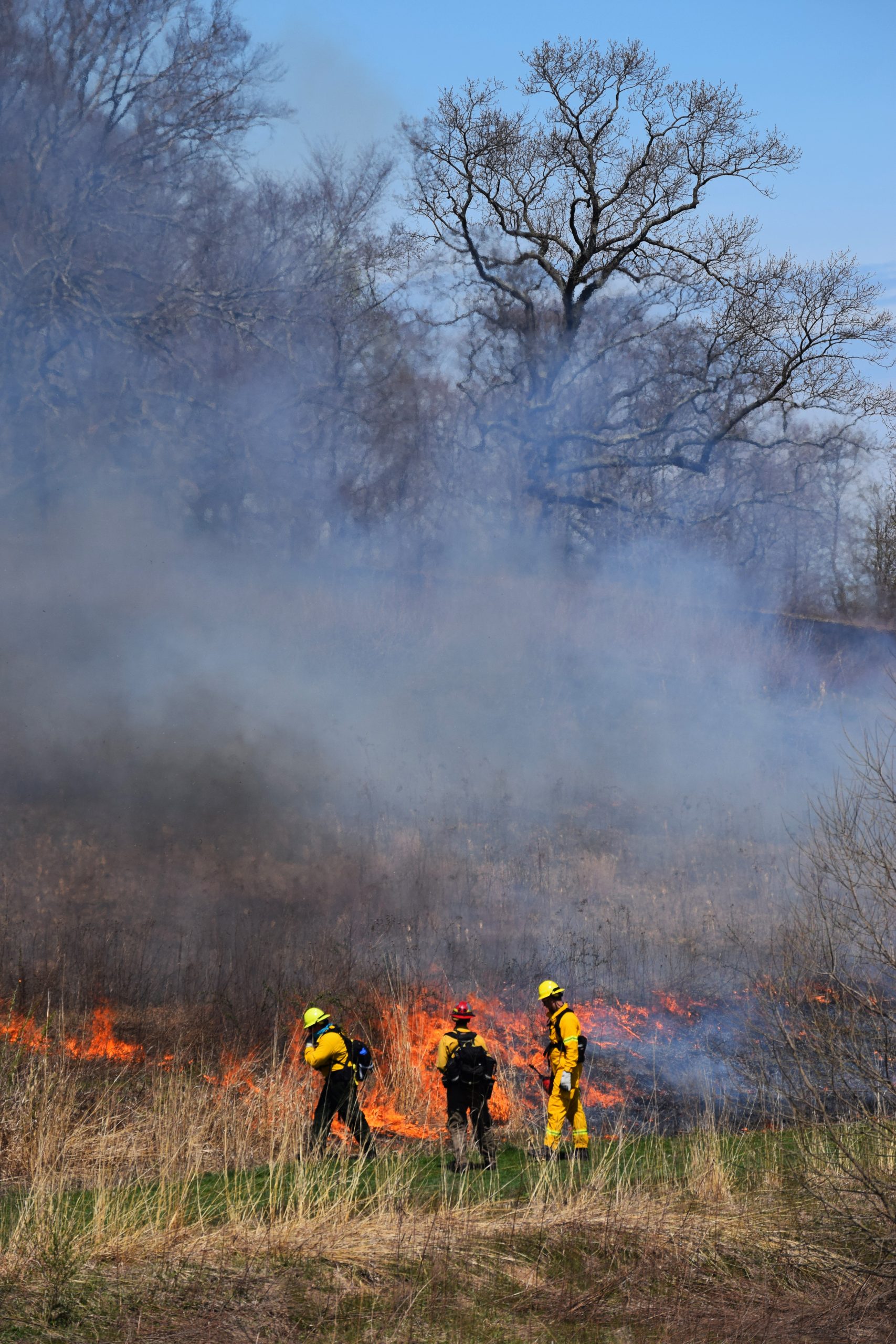
Crew members participate in a prescribed burn in the Meadow Garden at Longwood Gardens. Photo: Kirsty Wilson, courtesy of Longwood Gardens. -
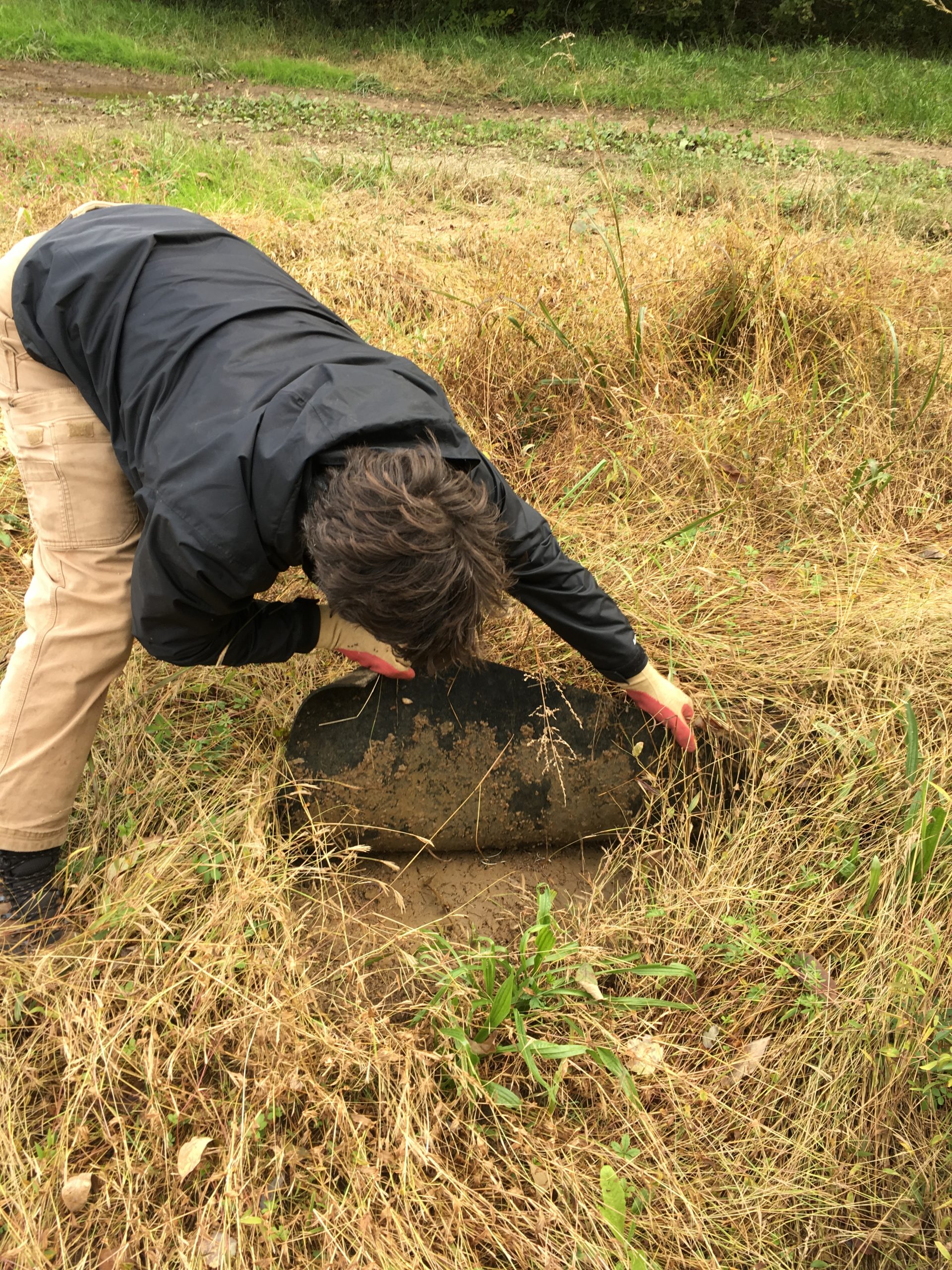
The Natural Lands Team of Longwood Gardens is using coverboard surveys to determine the presence of various herpetofauna in the forests, shrublands, and meadows of Longwood Gardens’ natural lands. These surveys take place during spring, summer, and fall. The data gained through these surveys are evaluated to assess the health and faunal diversity of Longwood Gardens’ ecosystems and inform future land management activities. Photo: Cooper Calvin, courtesy of Longwood Gardens. -
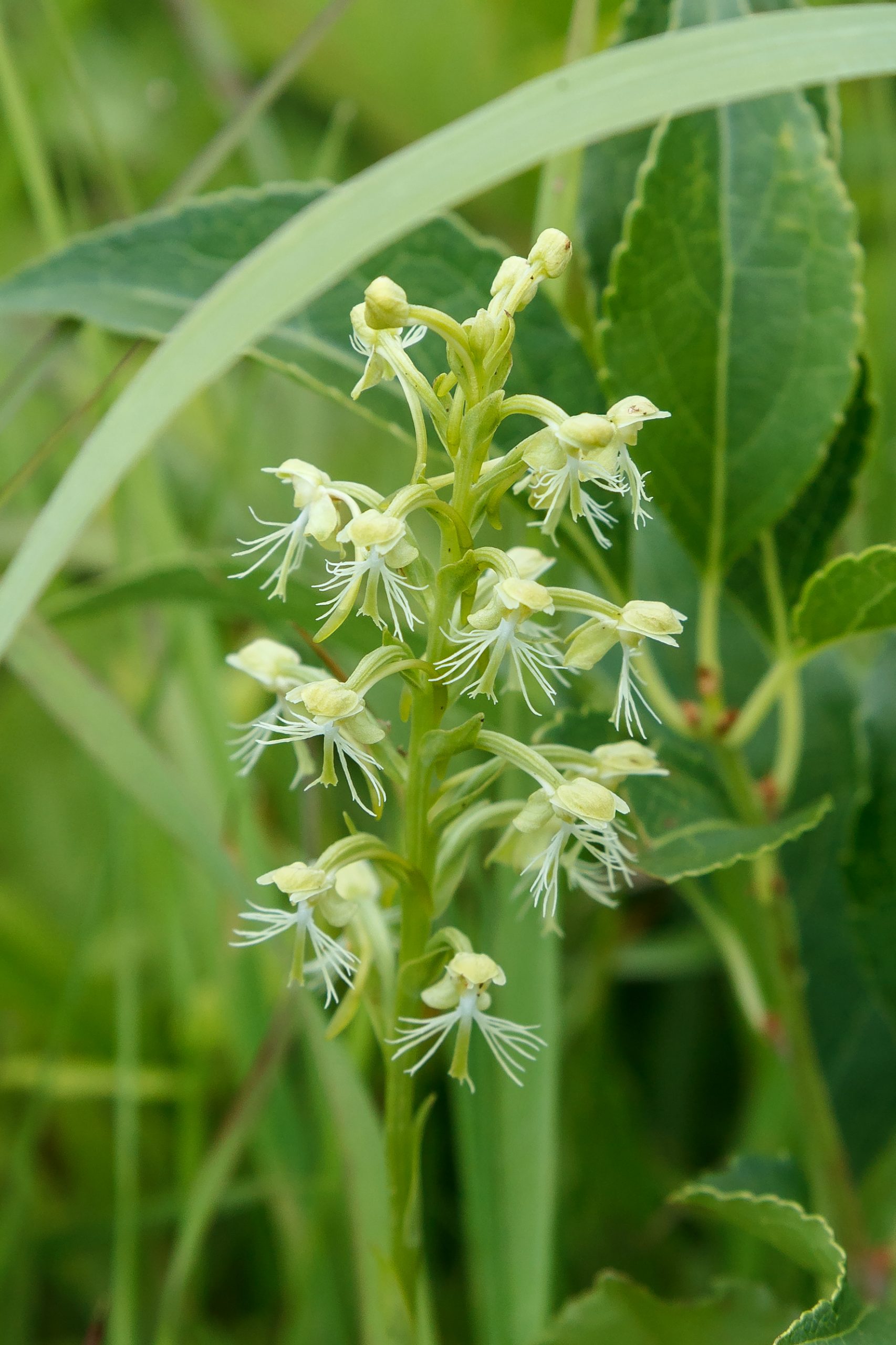
Platanthera lacera is one of six Platanthera species in Longwood’s Pennsylvania native orchid conservation program. It is a rare plant that is on the conservation watch list for Pennsylvania. Photo: courtesy of Longwood Gardens.
Giraffes in the Front-yard, Cactus Wren in the Back
San Diego Zoo Global is committed to conserving rare plants and animals both abroad and in their own backyard. At the San Diego Zoo Safari Park, this commitment is literal, with half of the Safari Park developed to exhibit and support exotic animals and the backyard is a natural coastal sage scrub reserve. The newly minted Natural Lands Program is taking on the challenges associated with stewarding this important piece of Southern California habitat.
Situated in the San Pasqual Valley of San Diego’s North County, the San Diego Zoo’s Safari Park is world-famous, attracting over a million visitors a year. Looking out over the African plains, visitors can observe herds of Thompson’s gazelles, scimitar-horned oryx, reticulated giraffes, and white rhinoceros. Though most may have never seen a Kenyan savanna in person, the view is a rare but familiar sight, reinforced in our minds by picture books and nature documentaries.
Past the rhinos and just over the hill to the east is an equally wild landscape, one that, paradoxically, every visitor walking through the gates has seen, but perhaps fewer can identify with precision: California’s coastal sage scrub. Adjacent to the Safari Park but still within the Zoo lease, the Safari Park Biodiversity Reserve is an 800-acre protected area consisting mostly of coastal sage scrub and subtypes like cactus scrub. Like the Safari Park, the Biodiversity Reserve is home to hundreds of species of plants and animals; unlike the Park, though, they are not on display, usually only noticed by the handful of researchers and students conducting work there.
-
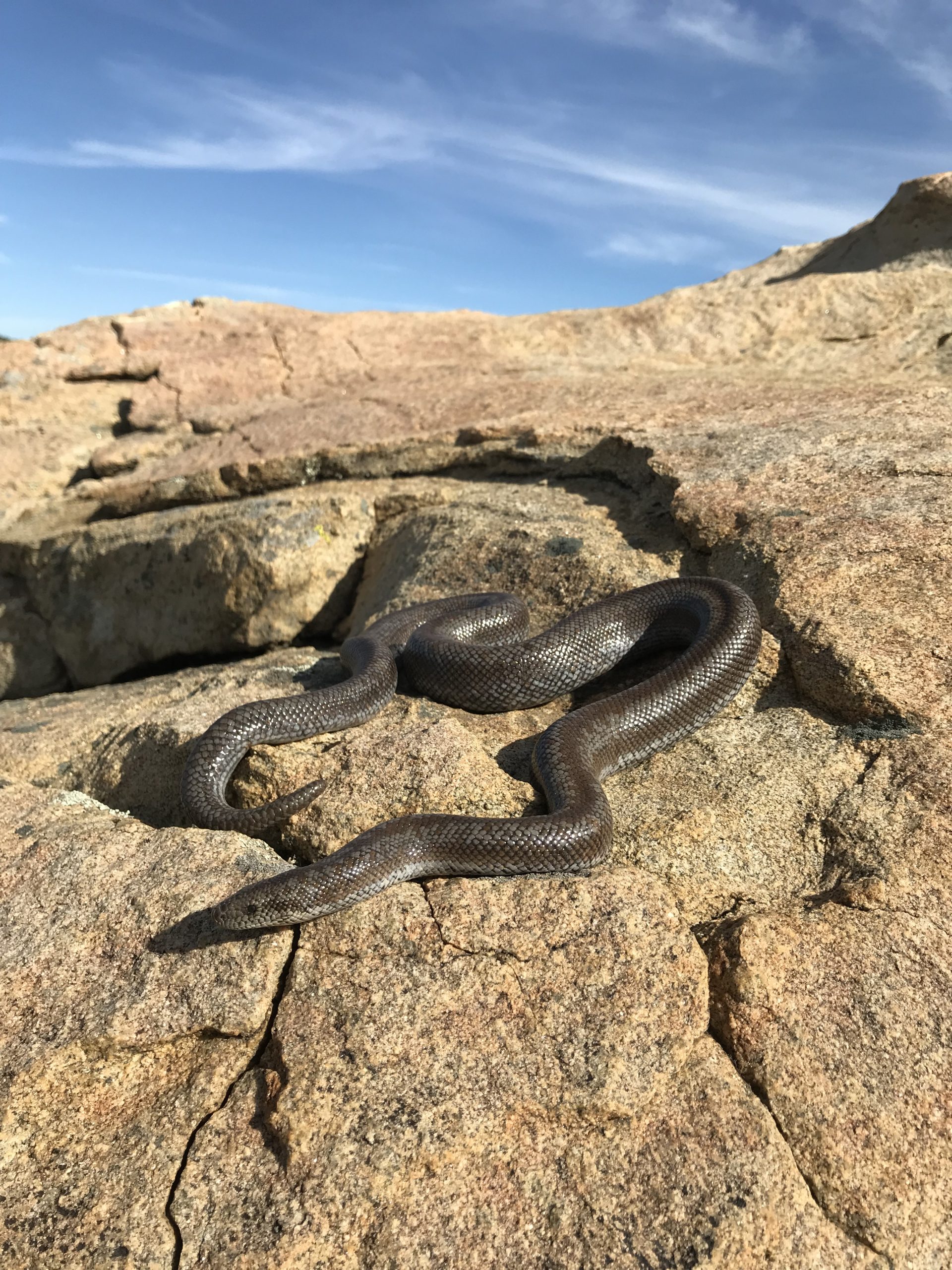
Rosy boas (Lichanura trivirgata) are a cryptic but spectacular resident of the Safari Park Biodiversity Reserve. Photo: Carlos de la Rosa, courtesy of San Diego Zoo Global. -
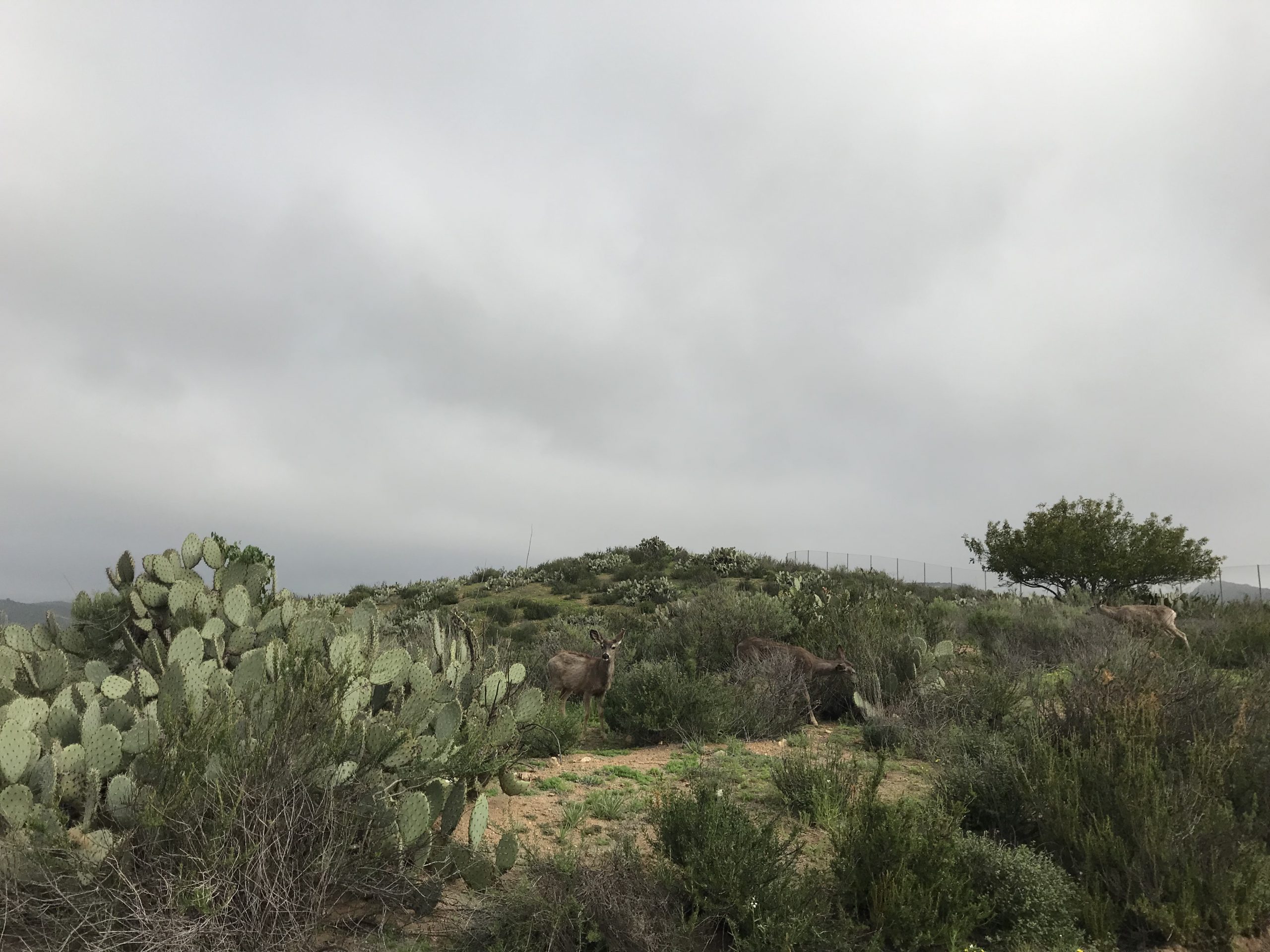
Mule deer (Odocoileus hemionus) are a common sight in the coastal sage scrub of the San Pasqual Valley in San Diego’s North County. Photo: Carlos de la Rosa, courtesy of San Diego Zoo Global. -

Cactus scrub and the surrounding coastal sage scrub habitats are home to many plant and animal species. Photo: Christa Horn, courtesy of San Diego Zoo Global.
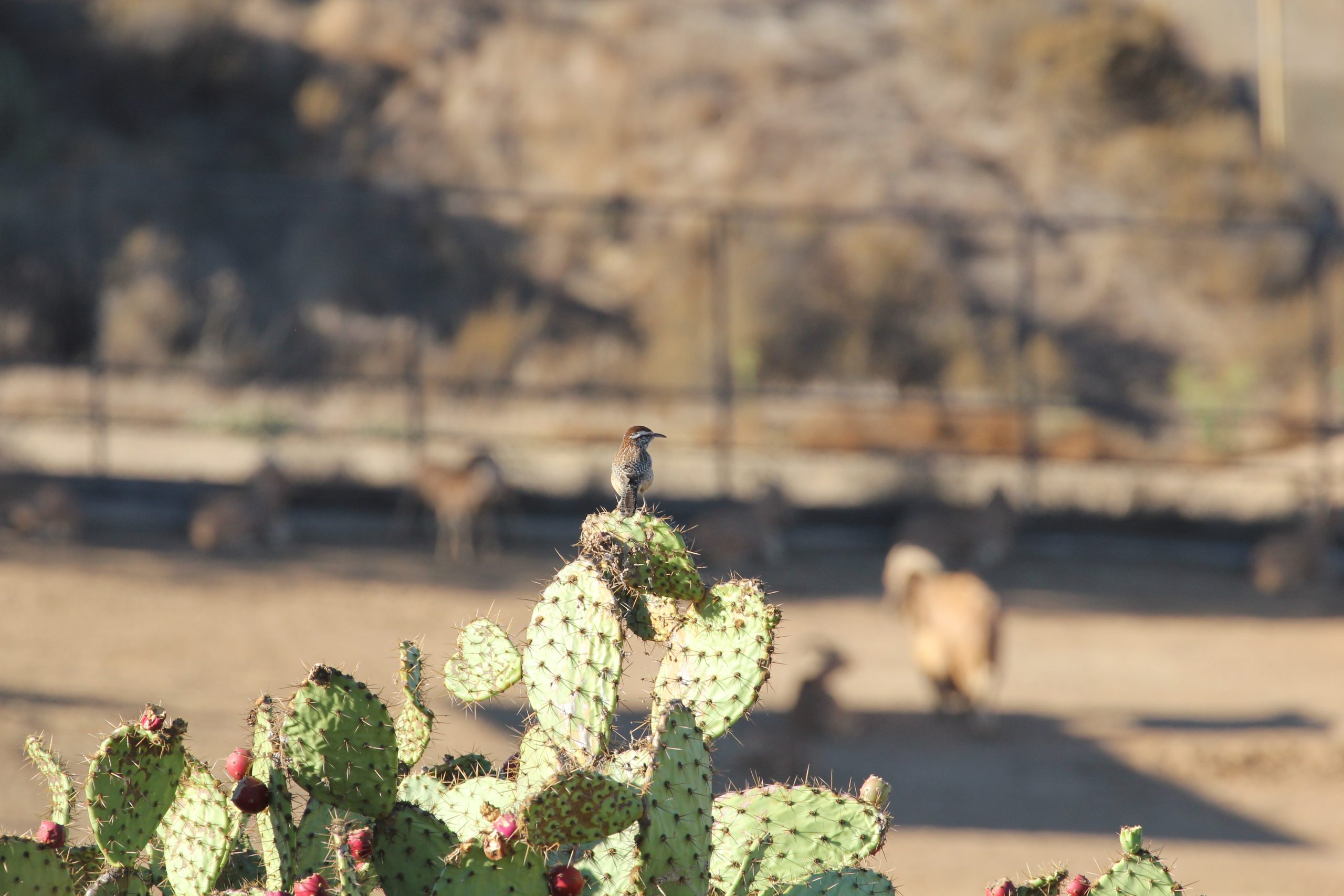
In the summer, the hills are a patchwork of browns and greys, a drab tapestry that gives no indication of the spectacular colors that come with spring. At the first rains, bush rue (Cneoridium dumosum) and four o’clock (Mirabilis laevis) flowers begin to brighten the landscape; if precipitation continues, the orange and yellow of California poppy (Eschscholzia californica), and bush sunflower (Encelia californica) will mix with the purple tints of Parry’s phacelia (Phacelia parryi), caterpillar phacelia (Phacelia cicutaria), and blue fiestaflower (Pholistoma auritum). Later in the season, as the days become warmer and longer, more color emerges: purple chia (Salvia columbariae), pink tomcat clover (Trifolium willdenovii), violet showy penstemon (Penstemon spectabilis), magenta owl’s clover (Castilleja densiflora), to name a few of the species. Under a stand of coast live oak (Quercus agrifolia), you may even find Campo Clarkia (Clarkia delicata), an annual recognized as threatened or endangered in California.
San Diego County is noteworthy for its biological diversity, as well as high numbers of rare and threatened species. Habitat destruction, wildfire, and invasive species are highest on the list of likely drivers of local biological extinctions. Recently, San Diego Zoo Global created the Natural Lands Program to begin taking a more hands on and comprehensive approach to managing the habitat on our lands. In the Biodiversity Reserve, mitigating wildfire and invasive species are the highest priorities; if unchecked, either could cause sensitive species of concern, such as the coastal cactus wren, to lose precious habitat.
Our goals for the Biodiversity Reserve fall into two categories. First, we aim to manage the natural lands in such a way that native species thrive, and are resilient to changing climate, wildfire, drought, and invasive species. This year, we treated 18 acres of stinknet (Oncosiphon piluliferum), an annual weed and emerging threat in the area, gaining a foothold in our south-facing slopes. These same slopes support an extensive patch of prickly pear cactus, vital habitat for the coastal cactus wren. By removing stinknet, we are improving habitat for cactus wrens and the many other species that call coastal sage scrub home.

The weed removal also helps protect the habitat from wildfire by reducing fine fuels that could increase the frequency of fires. An early task of the Natural Lands Program will be to develop a management plan to help guide and prioritize management activities.
Second, we are working to build a robust research and monitoring program that feeds back into our management plan. To know our baselines and historical populations of sensitive species, we are pulling together data and findings from previous research in the Biodiversity Reserve; likewise, we are planning new research projects designed to help us chart a path forward. Later this spring, we will conduct a thorough inventory of locations likely to contain rare plants. After a decade of drought in Southern California, the robust rains this year have us excited to see what species have been lying dormant in the seed bank. We are also designing experiments to test the response of snakes and lizards to habitat restoration, and to understand how species will survive as our climate changes.
Though both management and research activities have occurred on the conserved land for decades, the new Natural Lands Program is an opportunity to place them in the context of a comprehensive management plan. SDZG’s commitment to this program also demonstrates its commitment to conservation, not only of the giraffes, elephants, and other exotic species in their care and abroad, but to the species found in their own backyard.
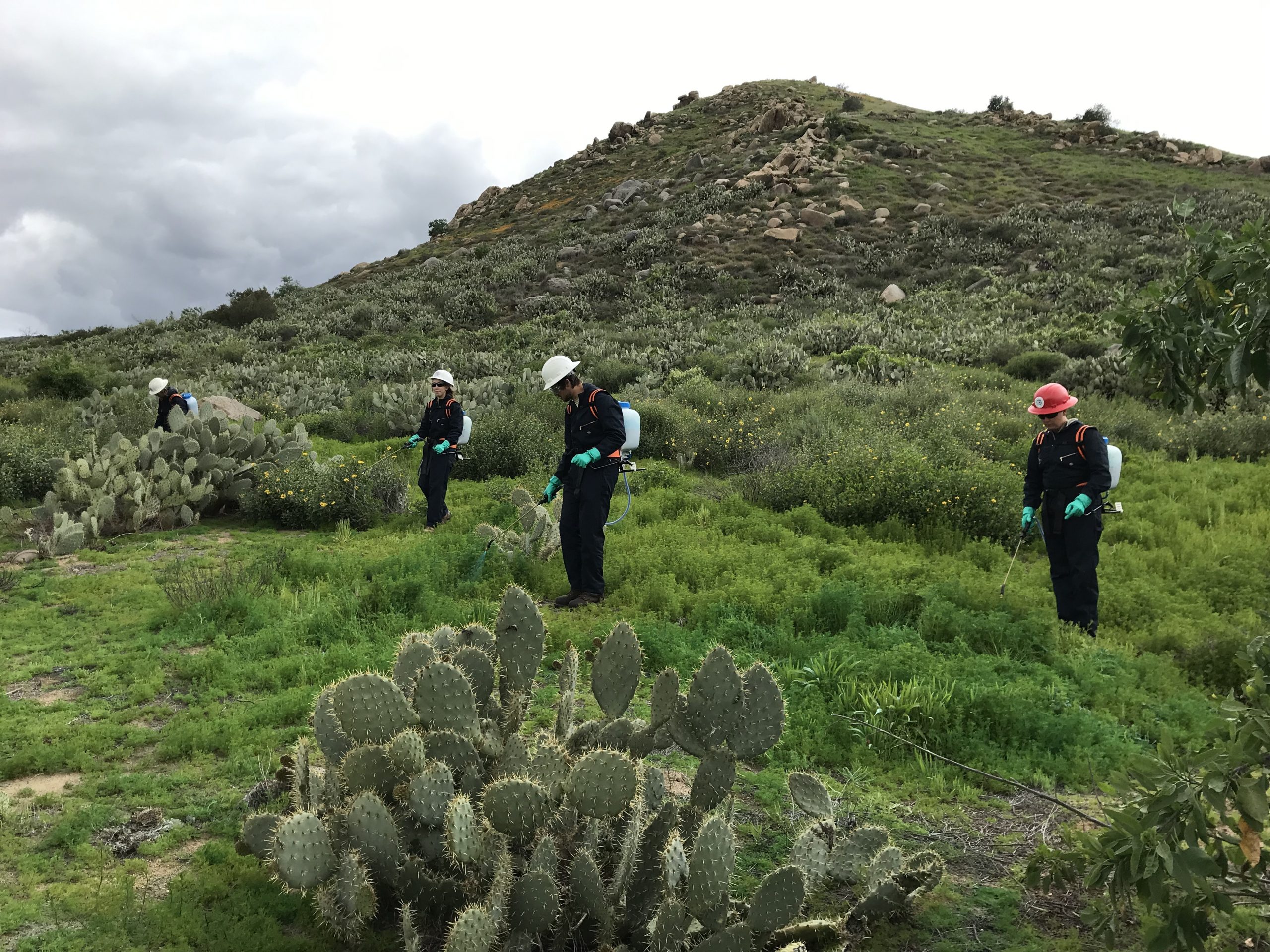
Artful Stewardship of Nature in Indiana
Dotted with forest, wildflowers, bird watching stations and art installations, the 100-acre Virginia B. Fairbanks Art and Nature Park at Newfields is a stunning place where visitors can appreciate native Indiana plant communities due to the long-term restoration efforts of its land management program.
Just five miles from downtown Indianapolis, the Newfields campus consists of beautiful galleries, gardens, and a historic property – including the Virginia B. Fairbanks Art and Nature Park: 100 Acres, all bringing together nature and the arts. The Art and Nature Park is a floodplain forest of mixed hardwoods filled with white oaks, dogwoods, carpets of trilliums, and much more. To draw parallels between art & nature, there are six contemporary art installations with varying connections to nature throughout the Park. But the idyllic blend of native species and striking art was quite an undertaking, with decades of work going into taking a property with a heavy disturbance history into a haven for native plants.
After decades of farming the property had also been used as a quarry. Deposits of gravel left by the flow of the White River, located adjacent to the Park, were excavated to build the local bridge and interstates. Afterwards, a small channel was dug out to connect the White River to the quarry, creating a 35-acre lake – now a centerpiece of the lands. Abandoned, invasive Amur honeysuckle (Lonicera mackii), purple wintercreeper (Euonymus fortunei), and oriental bittersweet (Celastrus orbiculatus), among other early successional non-natives, soon dominated the land. When Newfields began managing the lands in the early 2000s these aggressive non-native invasive plants were (and continue to be) a great challenge.
Newfields has spent more than a decade removing invasive species on more than 40 of the 65 wooded acres. To do so, they have diligently grown their group volunteer program; bringing in big groups of volunteers from businesses and other organizations allows them to accomplish a large amount of work in a short spell. The team has developed effective treatment plans for invasive species found on the property. They also monitor their treatment areas – keeping a wary eye out for any returning invasives. The property will never be free of invasive plants, but the ultimate goal is to create native habitats that have the ability to overcome invasive pressure.
Fortunately, they have also made great strides in returning the Indiana native plant species to the lands. Some remnant sections of forest gave clues as to what the lands looked like prior to the farming, quarrying, and abandonment. With these clues and their knowledge of the Indiana native floodplain plant community, Newfields strives to restore the property to more closely resemble that of the pre-disturbance native Indiana communities that once existed. A diverse and healthy balance of habitat types, the Park consist of floodplain and wetland related species while also displaying other plant communities where appropriate, such as upland meadow plantings that will help support pollinators.
As a result of the team’s efforts, visitors to the Art and Nature park are able to enjoy the beauty of the spring ephemerals – bluebells, trilliums, squirrel corn, bloodroot, and more. They might even catch a view of the rare Royal catchfly (Silene regia), also found on the property. Being part of the Newfields campus, the Park works with fantastic educators, interpreters, designers, and, most excitedly, a diverse audience. Tours, classes, field trips, outdoor events for kids and families all occur on the 100 acres, helping Newfields use the Park to achieve its mission of creating exceptional experiences in art and nature.
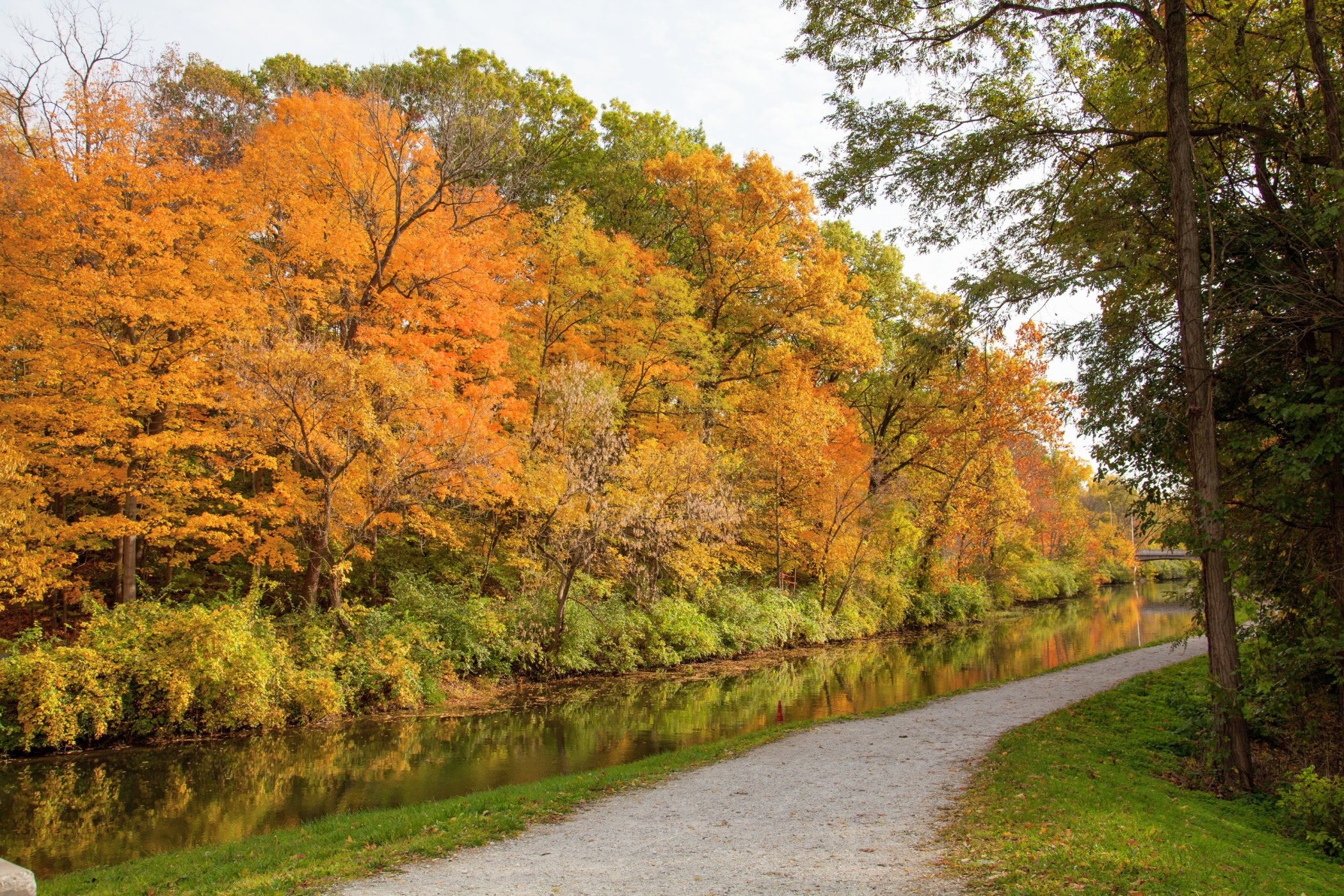
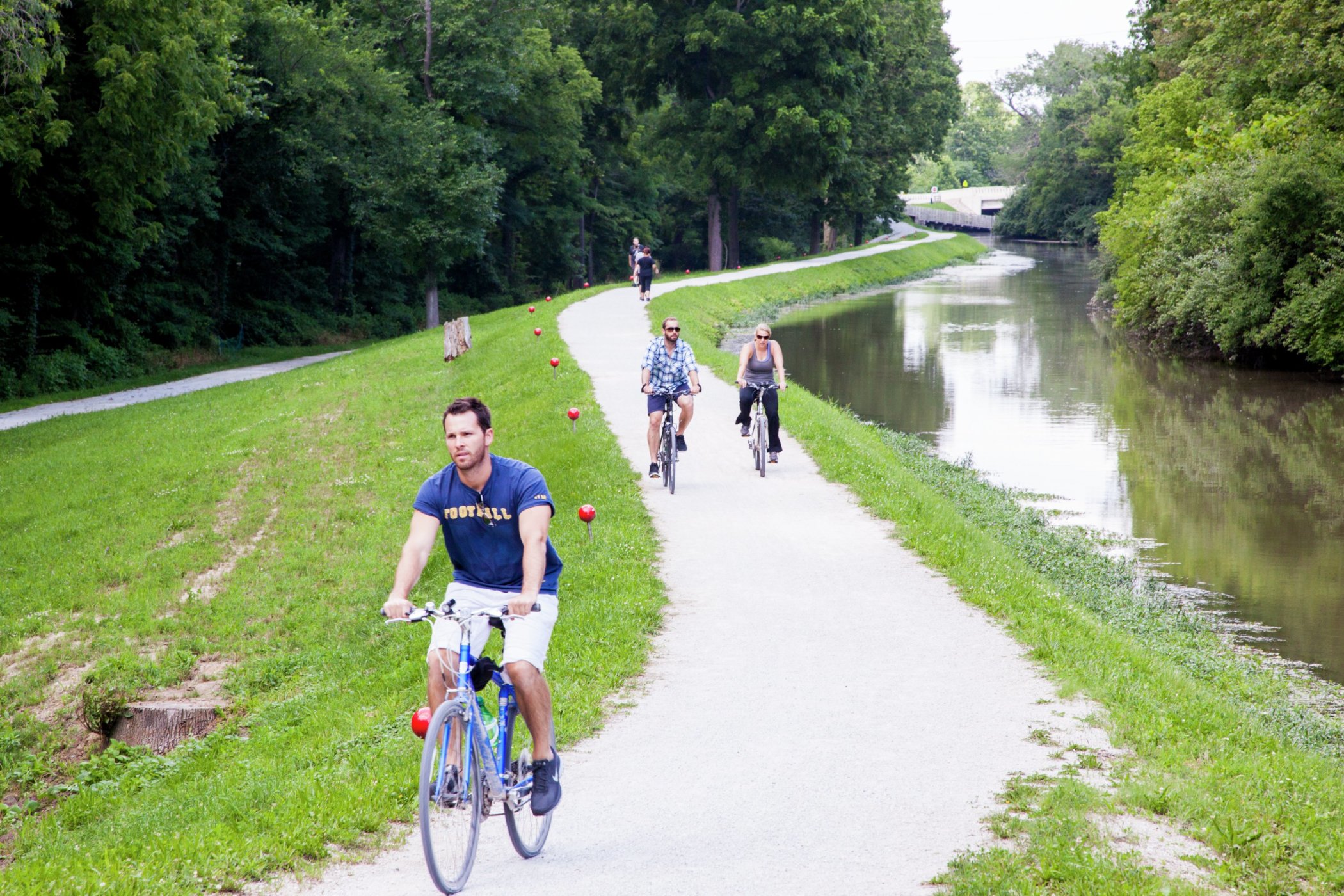
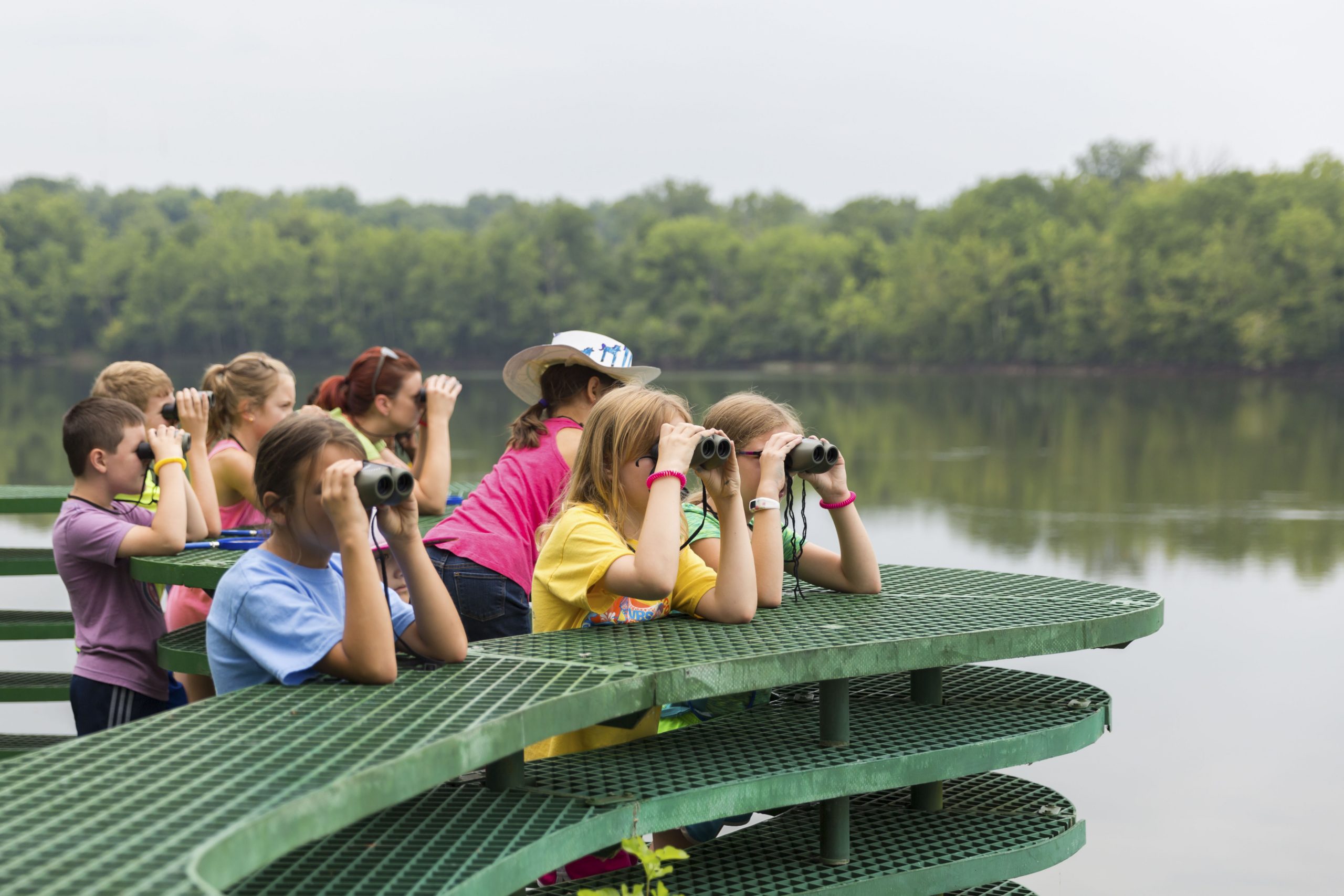
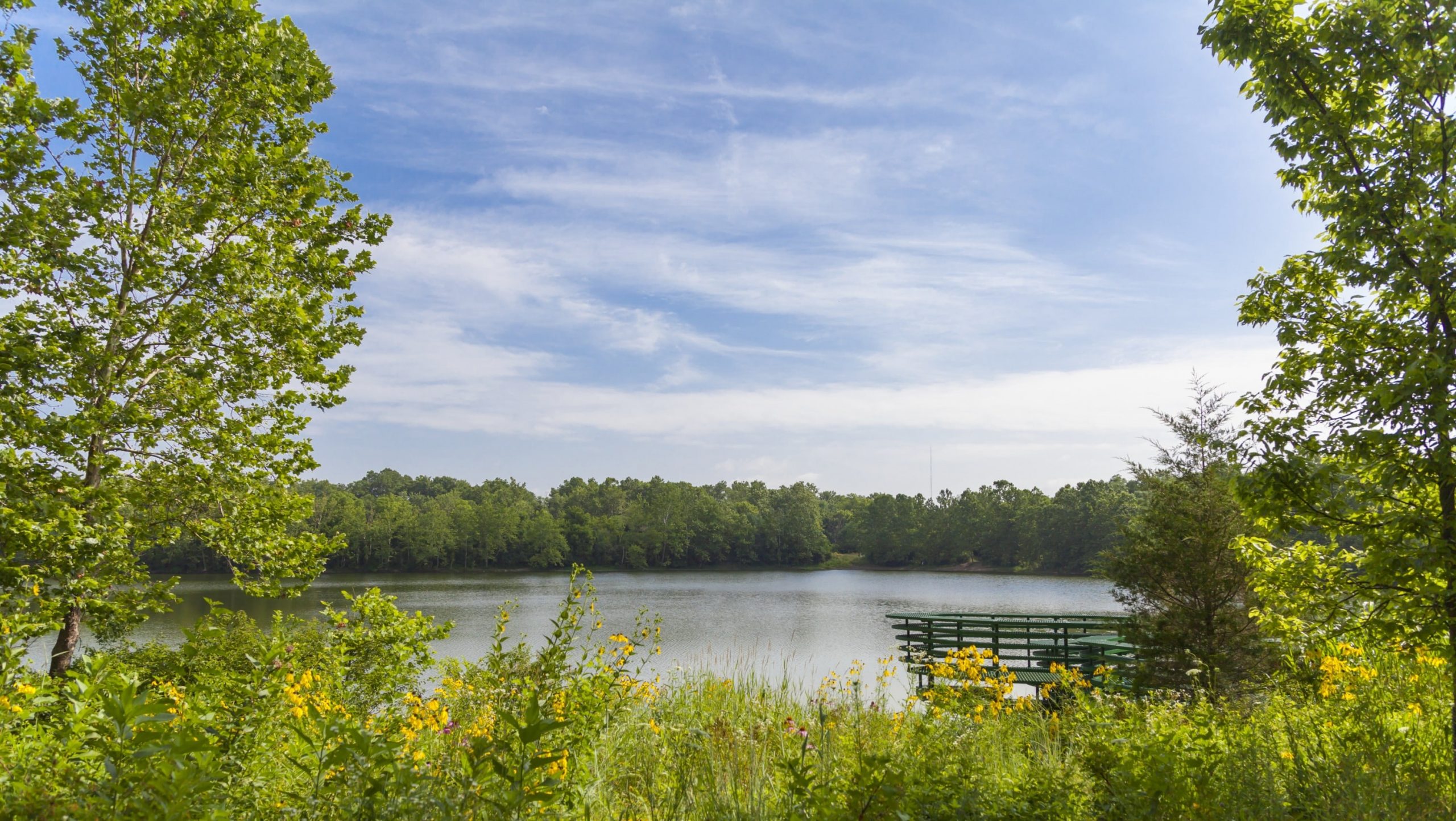
Johnny Randall
Johnny Randall was drawn into the world of plant conservation as he sought to apply the principles of ecology and conservation biology. He found this opportunity as Director of Conservation Programs at North Carolina Botanical Garden, and rare plants of the southeast have greatly benefited as a result. In applying scientific principles, often on the landscape scale and through adaptive management, his exemplary work has impacted regional and statewide efforts to recover rare plants.
When did you first fall in love with plants?
It’s really hard to say when I first fell in love with plants, but I do have very early childhood memories of admiring crabgrass flowers (thinking the anthers were tiny dangling ants), climbing to the top of the white pines at my grandparents’ house, watching bees pollinate flowers, and learning to identify trees. Through my teens, I was an avid backpacker, which took me into remote and inspiring plant-rich areas. But it was in my first botany and plant taxonomy courses in college that I became profoundly smitten with plants.
What was your career path leading up to your position as Director of Conservation Programs?
After studying biology as an undergraduate I went to graduate school in Botany – studying grass systematics for my master’s and pollination ecology for my doctoral dissertation – after which I went directly into academics. I enjoyed teaching, research, and the general world of a biology professor. But after about 10 years, I felt driven to apply the principles of ecology and conservation biology rather than to simply lecture and do research. I also led a faculty protest over the proposal to build various athletic facilities in the university’s natural areas, which the entire faculty opposed. The university president moved ahead with these plans, I resigned my position, and began looking for other academic jobs. Coincidental with this athletics/nature preserve brouhaha – one of my best friends, who happened to work at the NC Botanical Garden, sent me the job ad for someone to develop a NCBG Conservation Program! I never looked back.
Today’s Conservation Department has five permanent staff, five seasonal paid interns, twelve stalwart weekly volunteers, and a regular crew of UNC-Chapel Hill work-study students. This group is the real Conservation Champions!
What are a couple of the major threats/challenges facing rare plants in North Carolina/the Southeastern US? How has your, or your institution’s, work addressed them?
The North Carolina Plant Conservation Program (PCP), which has close ties to NCBG, actually uses “threat” as a rare plant listing criterion. PCP categorizes species’ threats accordingly: Development (impacting 157 species), Fire Suppression (126 species), Incompatible Forestry (89 species), Hydrological Alteration (72 species), and Invasive Species (71 species). With a growing interest statewide in using prescribed fire, I predict some relaxation of this threat, but I also foresee increasing threats from development, invasive species’ effects, and of course hydrological alteration through sea level rise.
NCBG holds approximately 1,100 acres of nature preserves, to which we continue to add more. We manage these lands with invasive plant control, prescribed burning, and active restoration/rehabilitation. In addition, our NC Botanical Garden Foundation, Inc.,is a land trust that owns land and holds conservation easements. On the ex situ side, NCBG hosts collections of 56 National Collection taxa along with hundreds of the more common species. We also have numerous rare plant recovery projects – some of which span over 20 years.
What about working with plants has surprised you?
Although no longer particularly “surprised,” I am constantly flabbergasted and dismayed over “plant blindness.” Most humans are so completely ignorant about how amazing plants are in their diversity of form, adaptations to most any environment, the vast array of pollination mechanisms, their usefulness in our daily lives, the essential basis of food webs, and how plants are generally ignored or taken for granted as a primary guardian against climate change.
Please share one of your plant conservation projects.
Rather than limiting this to an individual species, I will highlight a rare plant community restoration project that benefits over 50 rare plant taxa! The NC Botanical Garden’s Penny’s Bend Nature Preserve is an 84-acre remnant Piedmont savanna. A severely fire-suppressed system, twenty years ago we began burning on a regular 2-3-year fire frequency. To our delight, returning fire to this ecosystem has been transformative: sapling-choked woodlands are now more open and diverse, sun-loving herbaceous plants thrive, and we are reintroducing rare plants that dropped out from the years of fire suppression.
But if I had to pick one National Collection species-specifc project to spotlight, it would with Venus flytrap . Our current recovery efforts combine range-wide seed collection for both long-term storage and more immediate reintroduction and population augmentation, and genetic architecture analyses that will hopefully reveal migration patterns over the eons (i.e., where it found refugia during inter-glacial periods and where conservation efforts should be directed). The wet pine savanna ecosystem within which Venus flytrap occurs is one of the most species-rich on Earth – and entirely dependent on a fire frequency of 1-3 years!
What emerging science (methods, approaches, discoveries) excites you most?
I am intrigued by the abundance of cryptic species that are hidden in plain sight. Many of these are necessarily rare and require plant systematics studies to confirm their unique identities. Combining genetic, morphometric, and common garden experiments is a powerful combination of contemporary “next generation” approaches with long-recognized methodologies. Coupled with this are phylogeographic studies that help show the patterns of plant migration, colonization, and speciation across entire regions.
What is one of the biggest challenges in land management in your region?
Using prescribed fire on both the larger landscape level preserves (>100 acres) and on small, but important, sites in the rural/urban interface is a huge challenge. According to many ecologists, fire suppression has had more pervasive and widespread negative effects than anything else on North American biological diversity. Not only is it a challenge to safely implement controlled burns, but fire necessarily contributes CO2 to the atmosphere. Increased plant vigor after burning can help balance the CO2 emission/uptake equation, but and it’s also important to note that regular fuel load reduction from regular fires helps to prevent catastrophic wildfires that produce tremendous amounts of carbon. But perhaps what is most important is to return a natural fire process that so greatly benefits entire ecosystems.
-

Young Johnny has several childhood memories observing nature and is pictured here with trailing phlox (Phlox nivalis). -

Johnny in the Colorado Rockies in the days of his academic career. -

Johnny contemplates the large pitcher plant, an Okee giant (Sarracenia minor) in the wild. -
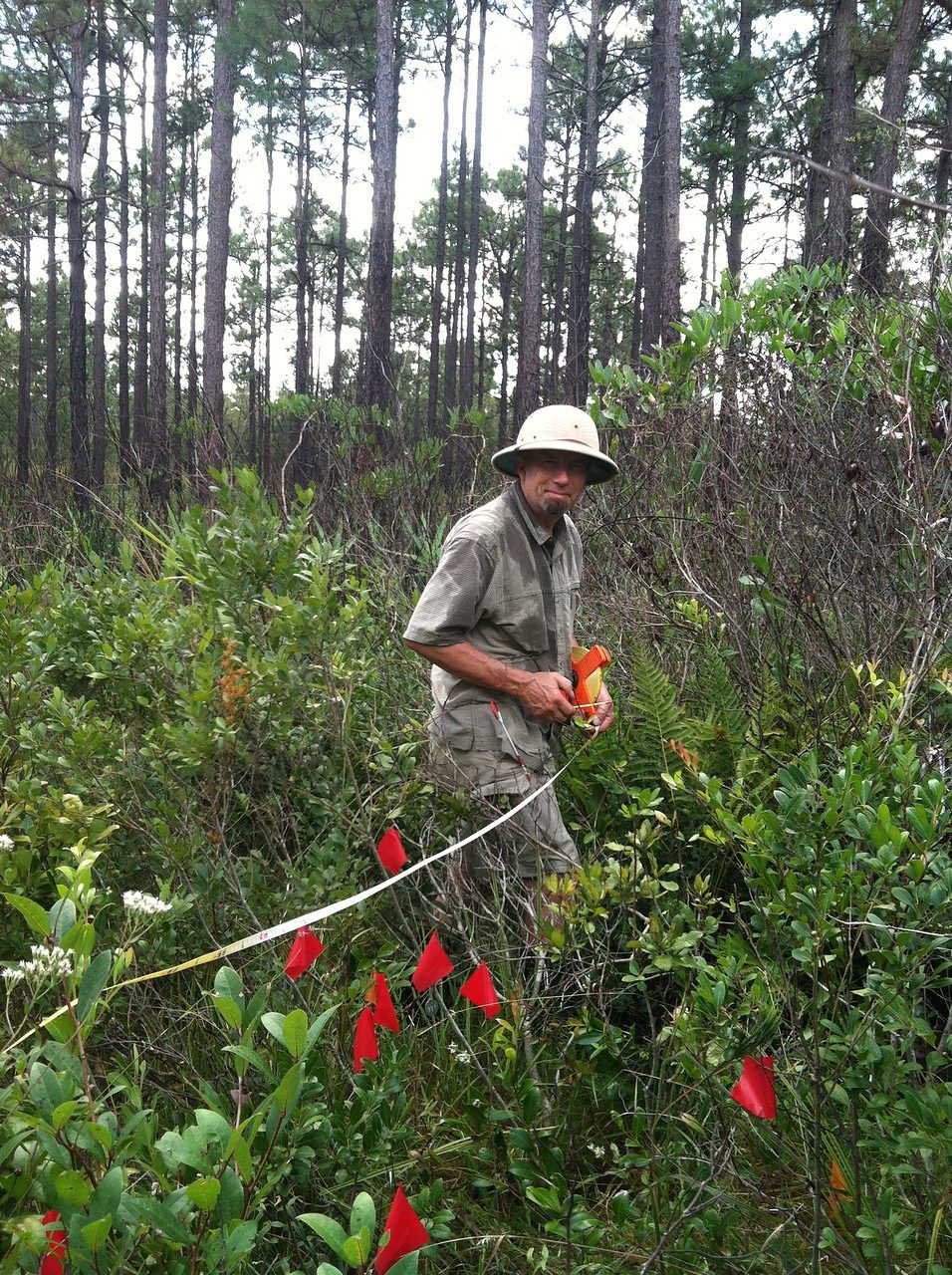
Johnny Randall monitors sandhills lily (Lilium pyrophilum), a species which benefits from regular burns. -

NCBG’s work with the Venus flytrap (Dionaea muscipula) has examined many of the issues this declining species faces. -
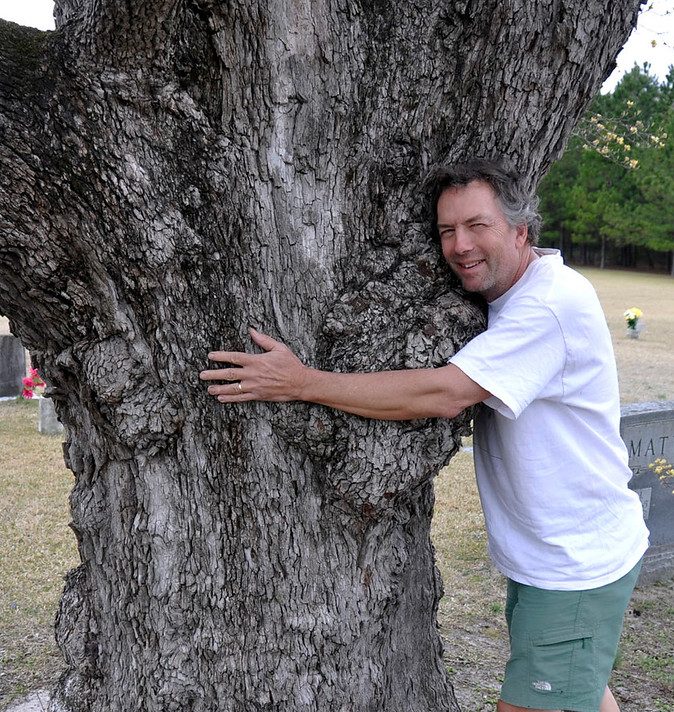
Johnny’s tree hugging ways brought him to the world of conservation after starting his career in academia.
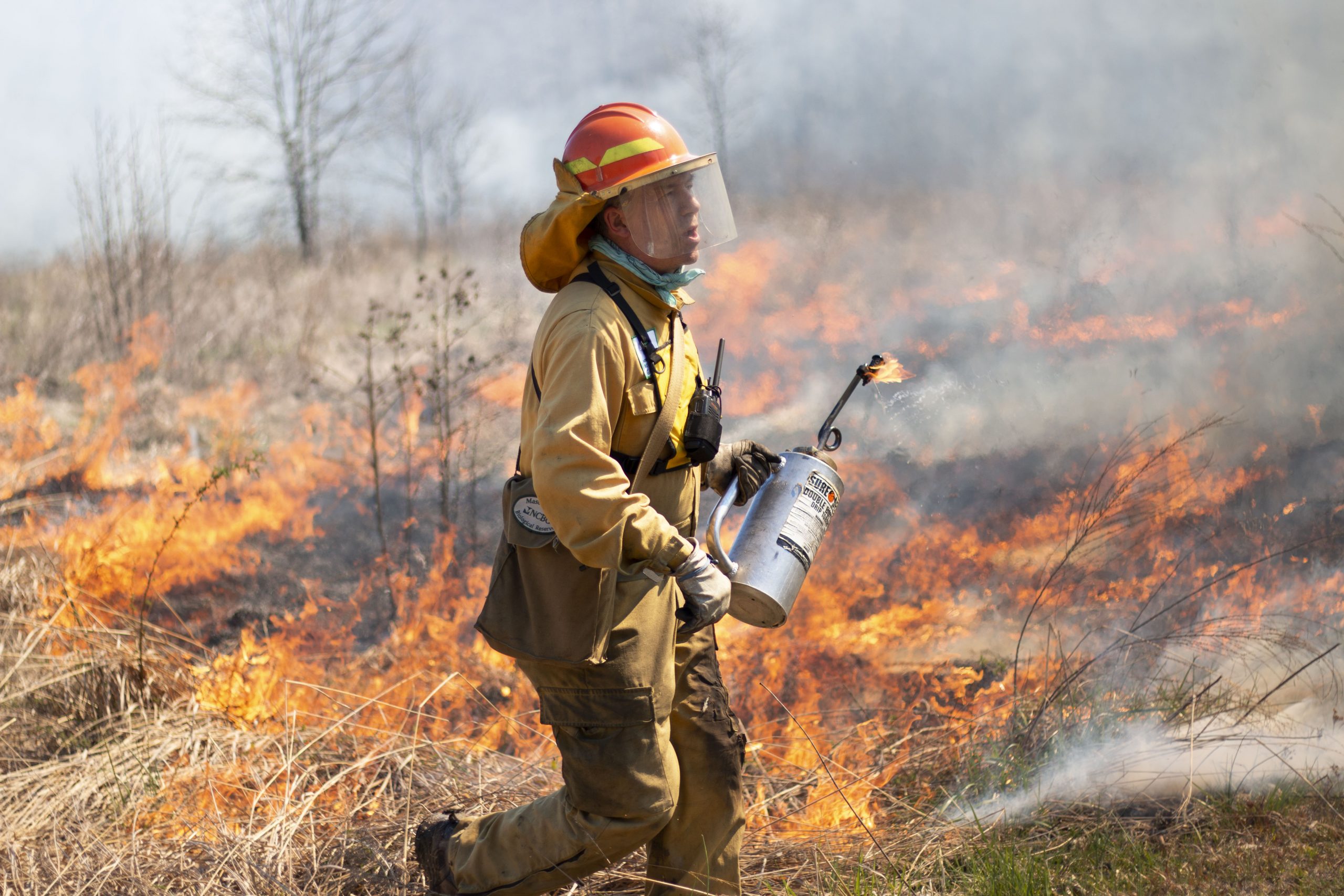
Get Updates
Get the latest news and conservation highlights from the CPC network by signing up for our newsletters.
Sign Up Today!Donate to CPC
Thank you for helping us save plant species facing extinction by making your gift to CPC through our secure donation portal!
Donate Today